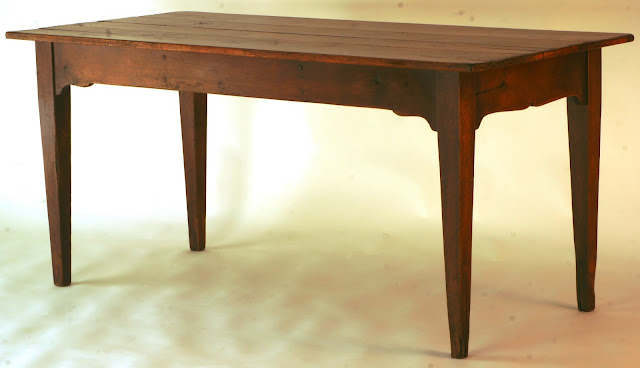 |
Remember the turquoise dining room from before? Well, this is the second sideboard for that room.
|

This turned out to be one of my favorite pieces, and the family it belongs to has plans to hand all of the dining room furniture down to their children. There are beautiful inscriptions done on the undersides and backs showing the names of each family member and space for future generations.
|
|
| The second sideboard is going right under that dark blue art piece. |
This is a fine example of a bespoke piece made for a family who owned two of our other pieces in the same room. The trestle table shown above, and the "Gustavian sideboard" in ivory and blue shown below on the opposite wall.
 |
The family liked the curved elements that were used elsewhere in the room, and wanted this next sideboard to have curved and rounded details too. I liked the idea of making a "companion piece" that would harmonize with the Gustavian sideboard yet not appear as part of a standardized "set" (using the exact same details applied to multiple pieces). Instead, we wanted the look to appear harmonious yet eclectic, as if the furnishings for the room had been collected over time.
|
|
 |
and we all loved the idea of a faux marble top.
|
 |
| More faux marble |
 |
| More faux marble |
 |
And more faux marble! I can't get enough. I decided to call this "faux faux-marble".
|
 |
They wanted the second sideboard to have a lower open shelf and two silverware drawers above.
 Fluting on the legs collects our "dirtyizer" (to mimic age and yellowing of the paint)
Fluting on the legs collects our "dirtyizer" (to mimic age and yellowing of the paint)
|
 |
The turned legs on this sideboard are the same diameter as those on the Gustavian sidebard. The delicate drawer pulls, we found on ebay.
|
 |
Other elements were inspired by the arches in the room and on the backs of the ivory chairs, and the painting above the mantle.
|
 |
The drawers needed dividers, and are lined with a layer of silver tarnish cloth underneath the velvet shown.
|
As a practical real-life mom, I felt it was essential for the dividers to pull out such that the drawers could be more easily cleaned, or the felt replaced after years of use. Each set of dividers is a whole box, which simply friction-fits into each drawer, and each divider in each box can unscrew for re-felting.
 |
| Another fun element to this piece: |
 |
| It has two secret compartments, one on each side. |
 |
| Shhhh... nobody's supposed to know this. |
 |
| :) |





































